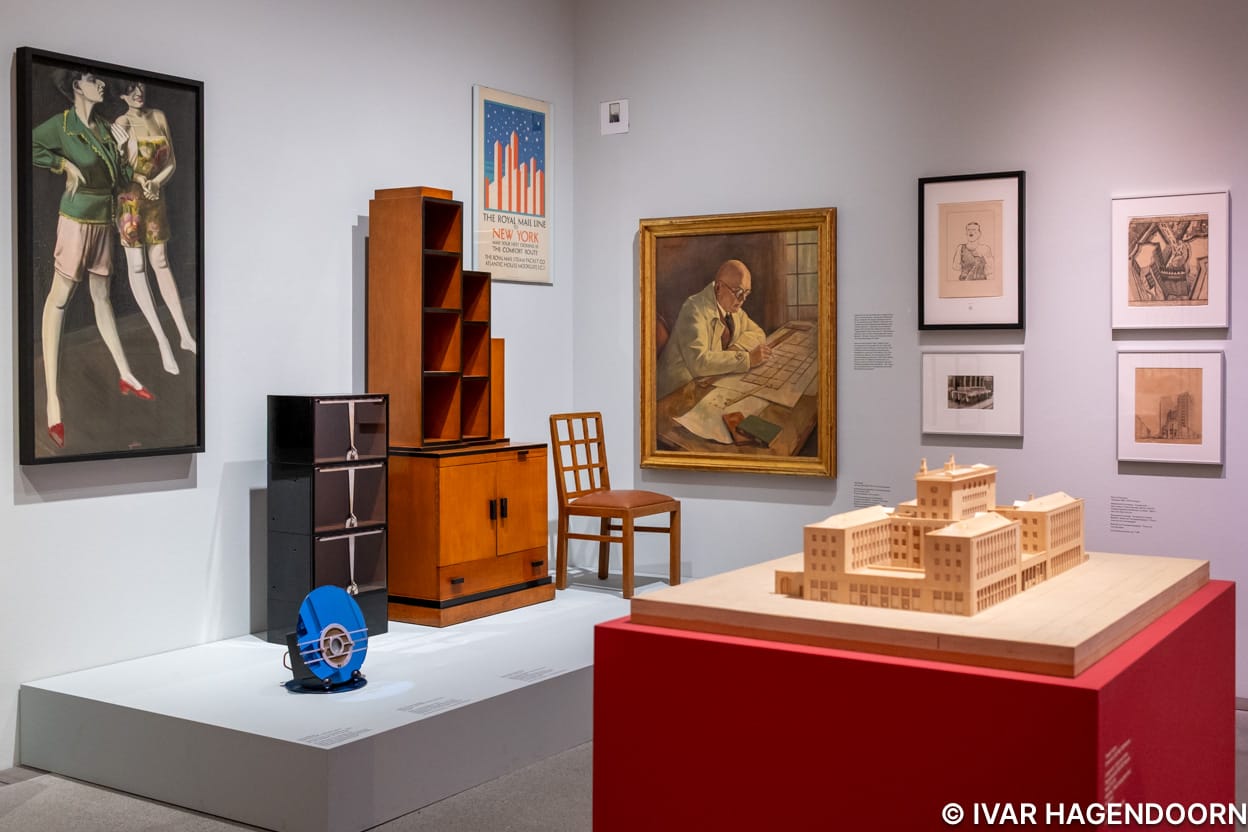
To celebrate the 100th anniversary of the foundation of “Die Neue Sammlung”, Germany’s first state design museum, the Pinakothek der Moderne in Munich has organized an exhibition showcasing highlights from the collections of the four museums that make up the Pinakothek der Moderne. The exhibition focuses on the years from the 1910s to the 1930s and is divided into four sections: New Aesthetics, New Materials and Technologies, New Institutions and New Society.

New Aesthetics
Modernism brought a break from traditional aesthetics, emphasizing abstraction, minimalism, and geometry. The movement favored basic forms, squares, triangles, rectangles, and a restricted color palette of black, white, gray, and primary colors. These elements were evident in both visual arts and architecture, such as in Constructivist-influenced designs. In architecture, this translated into cube-like, white buildings with functional features like flat roofs and large windows that enhanced light and air flow. Mobility and speed also inspired design, as seen in streamlined forms like the White Mars motorcycle, while photography transformed ordinary subjects into sculptural abstractions.

New Materials and Technologies
Modernism was grounded in optimism about industrialization and technology. Architects and designers embraced new materials like iron, reinforced concrete, tubular steel, and glass to create structures and furniture that were functional and hygienic. Innovations extended into art as well: photography developed new techniques, and art forms like photomontage and collage gained prominence. These changes reflected a broader cultural shift towards mass production, electrification, and standardization, representing a departure from artisanal craftsmanship. Technology was not only a tool but a core ideal of modernist progress.
New Institutions
Educational and cultural institutions were central to the spread of Modernism. The Bauhaus, founded in 1919, became a key hub for experimentation in art, design, and architecture, though architecture was not formally taught there until 1927. Other important centers included the Kunstgewerbeschule in Halle, which predated the Bauhaus in establishing a photography program. Municipal building offices and private firms also contributed to the New Building movement. Museums, such as the Bayerisches Nationalmuseum with its Department of Applied Arts, played a vital role in bringing modernist works to the public.
New Society
Modernism’s social vision was shaped by the trauma of World War I and a belief in the potential to reshape humanity and society. Artists oscillated between idealized and realistic depictions of people, often highlighting social struggles and aspirations for autonomy. The Weimar Republic supported housing reforms through public projects and affordable furniture programs. However, broader societal instability—marked by war, economic depression, and political extremism—challenged these ideals. Eventually, the Nazi regime exploited modernist aesthetics for propaganda when it served their purposes, highlighting the complex legacy of Modernism’s social ambitions.
4 Museums - 1 Modernism is a wonderful exhibition, I just wish it had been four times as large. By the way, the Pinakothek der Moderne is huge and the permanent collection is amazing. I’ll post some photos and a brief review if I can find the time.
4 Museen - 1 Moderne / 4 Museums - 1 Modernism is at the Pinakothek der Moderne in Munich until 28 September 2025.